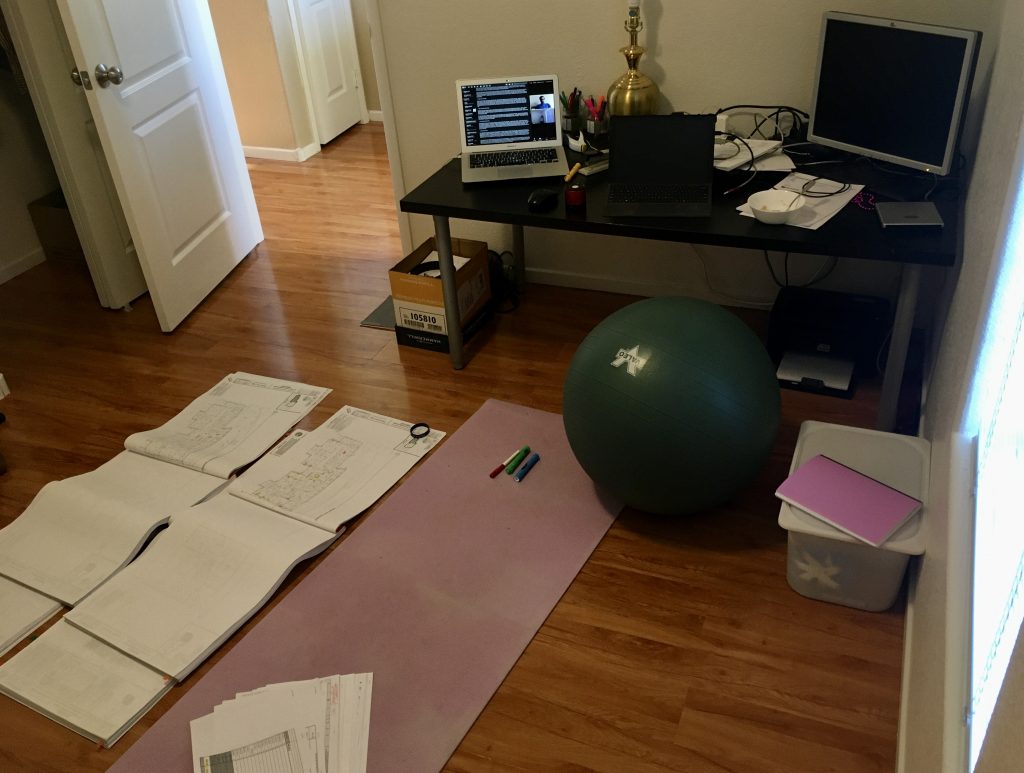I just finished analyzing a major change order for the my building. I’ve handled smaller ones, but this is the first time I’ve stared down a quarter million bucks in bite. Before sending out comments to my contractor, I thought I’d type up how it went, since this week-long push has been a good distillation of various tactics that I have found useful for tackling an unfamiliar, scary project.
- Jump in and thrash around.
When confronted with a new and difficult task, the first danger is analysis paralysis. The best antidote is to start by assuming the initial efforts will be wasted. Knowing the first few hours are inevitably suboptimal, I am mentally free to just jump in. The sooner I jump in, the sooner I’ll to cobble together a better strategy for completing the project.
Unless there is an obviously better first step, a good default is to categorize a project into smaller pieces, so I started last Wednesday evening by sorting out the subcontractor bids. But I wasn’t done thrashing around yet. Thursday morning, I started analyzing the first couple bids. Only by jumping into the deep end did I realize that I was missing a critical item. It is hard to analyze changes without the original. I needed to get an older set of plans from the office.
- Make room to breathe.
I didn’t have an opportunity to go to the office till Sunday, but intervening these days weren’t wasted. I spent Thursday afternoon and Friday clearing out a bunch of little tasks and emails. I spent Saturday doing absolutely nothing, we often underestimate the important of rest! On Sunday I picked up the plans. Even though I did not do anything on this project, these days were critical days that set me up for the big push. It was important to recharge my energy and have the confidence that there weren’t any urgent work fires while I spent the next few days offline.
- Eat the biggest frog first.
Monday morning was got chewed up with random work detritus, and I finally started in earnest during the afternoon. I quickly realized I needed to step back. I couldn’t analyze numbers until I had a better grasp of the basis for these prices. I needed to grind through every line on the architect’s change narrative as well as every cloud and delta on their drawings sheets.
So that’s what I did on Tuesday. Being nitpicky has negative connotations, but it was the necessary tactic for this effort. I highlighted every item on the sheets and compiled any thoughts and comments into a detailed list. I had hoped this would take half a day, but took the entire day. However, I now had a thorough grasp of what had changed. Just as important, I was now confident in my grasp of this knowledge.
- Tackle the easy ones first.
On Wednesday (a week after I started) I finally started on the main task – crunching the numbers. Unlike the previous day, I took the opposite approach and started with the easy bids first. Since I am new to being an owner’s rep, I don’t have a deep well of experience. Heck, I was still designing the spreadsheet for compiling the numbers! It made more sense to slowly tiptoe into the deep end, better to make my mistakes on little items before tackling the really complex bids. By the end of the day I had gone through analyzed all fifteen bids and plugged their numbers into my now-refined spreadsheet.
- Tidy up your mess.
The last 5% of the project always takes an inordinate amount of energy to finish well, but these last steps will separate a mediocre product from a good delivery. In this case, I needed to clean up the spreadsheet. The analysis was the hard work, but it won’t do much good for the contractor if it isn’t readable. Plus, I won’t be looking at these numbers for a couple weeks before the revised pricing comes back. If I quit before getting thoroughly organized, I will waste a lot more time getting back into the numbers after my short term memory has faded. As always, suck it up, finish strong.
This effort involved quite a bit of tedious grunt work, but life is rarely glamorous. I had been architecting long enough to jump in without much fear, but I’m new enough as an owner’s rep to be pleasantly surprised at how smoothly this effort went. The opening and closing steps are consistently critical for any endeavor. The art is found in aptly playing the middle three tactics during the meat of the project. It’s a game of mixing and matching different approaches to keep progress moving effectively.
All in all, it went fairly well this time, which must be why I’m bragging about it on this blog.
Thanks to the cadre at Akimbo who accompanied me during this effort as well as the fine folks at wecoffee.io who letting me hang out in their virtual workspace while I typed this up this post.
Have fun on your own projects!
